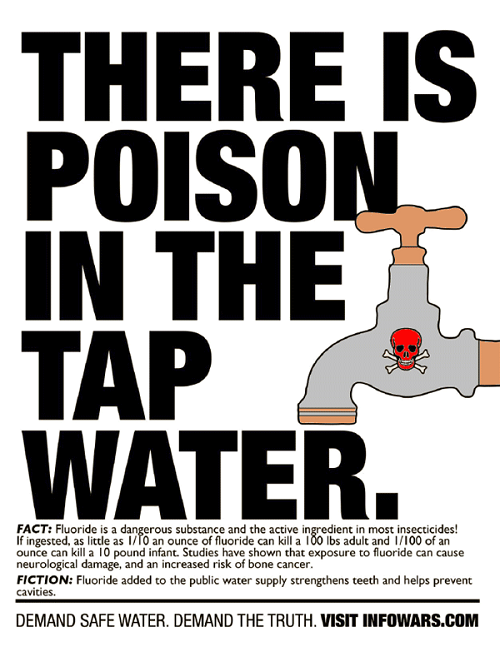Shocking! This ‘Tequila’ Sweetener is Far Worse than High Fructose Corn Syrup
Posted by Dr. Mercola
March 30 2010
Many people interested in staying healthy have switched to agave as a safer “natural” sweetener. They want to avoid well documented dangerous sweeteners like HFCS (high fructose corn syrup) but are unaware that agave is actually WORSE than HFCS.
So just what is agave?
Blue agave is an exotic plant growing in the rich volcanic soil of Mexico under a hot tropical sun, boasting a stately flower stem that blooms only once in its lifetime. “Agave” literally means “noble.” It’s generally recognized as a superstar of the herbal remedy world, claiming to offer relief for indigestion, bowel irregularity, and skin wounds.
Ferment it, and you have Mexico’s favorite adult beverage — tequila.
Just the name “agave” conjures up images of romantic tropical excursions and mysterious shamanic medicine.
These are the mental images agave “nectar” sellers want you to hold. They use agave’s royal pedigree to cover the truth that what they’re selling you is a bottle of high-fructose syrup, so highly processed and refined that it bears NO resemblance to the plant of its namesake.
What is the “Real” Truth about Agave?
If you knew the truth about what’s really in it, you’d be dumping it down the drain — and that would certainly be bad for sales.
Agave “nectar” or agave “syrup” is nothing more than a laboratory-generated super-condensed fructose syrup, devoid of virtually all nutrient value, offering you metabolic misfortune.
Unfortunately, masterful marketing has resulted in the astronomical popularity of agave syrup among people who believe they are doing their health a favor by avoiding refined sugars like high fructose corn syrup, and dangerous artificial sweeteners.
And if you’re diabetic, you’ve been especially targeted and told this is simply the best thing for you since locally grown organic lettuce, that it’s “diabetic friendly,” has a “low glycemic index” and doesn’t spike your blood sugar.
While agave syrup does have a low-glycemic index, so does antifreeze — that doesn’t mean it’s good for you. Agave syrup has the highest fructose content of any commercial sweetener — ranging from 70 to 97 percent, depending on the brand, which is FAR HIGHER than high fructose corn syrup (HFCS), which averages 55 percent.
This makes agave actually WORSE than HFCS.
It is important to understand that fructose does not increase insulin levels, which is not necessarily good as what it does do is radically increase insulin resistance, which is FAR more dangerous. You see, it’s okay for your insulin levels to rise, that is normal. You just don’t want these insulin levels to remain elevated, which is what insulin resistance causes.
That is why fasting insulin is such a powerful test, as it is a very powerful reflection of your insulin resistance.
In addition to insulin resistance, your risk of liver damage increases, along with triglycerides and a whole host of other health problems, as discussed in this CBC News video about the newly discovered dangers of high fructose corn syrup. The study discussed in this news report is about HFCS, however, it’s well worth remembering that agave contains MORE fructose than HFCS, and in all likelihood, it’s the FRUCTOSE that is causing these severe liver problems.
How Agave is Grown and Produced Proves it is Unnatural
Agaves grow primarily in Mexico, but you can also find them in the southern and western United States, as well as in South America. Agaves are not cacti, but succulents of the yucca family, more closely related to amaryllis and other lilies. Edible parts of the agave are the flowers, leaves, stalks and the sap.
A mature agave is 7 to 12 feet in diameter with leaves that are 5 to 8 feet tall — an impressive plant in stature, to be sure. There are over 100 species of agave, in a wide variety of sizes and colors.
Although the industry wants you to believe that agave nectar runs straight from the plant and into your jar, nothing could not be farther from the truth.
In spite of manufacturer’s claims, agave “nectar” is not made from the sap of the yucca or agave plant but from the starch of its pineapple-like root bulb[i]. The root is comprised mainly of starch, similar to corn, and a complex carbohydrate called inulin, which is made up of fructose molecules.
The process by which agave starch and inulin are converted into “nectar” is VERY similar to the process by which cornstarch is converted into HFCS1.
The agave starch is converted into fructose-rich syrup using genetically modified enzymes and a chemically intensive process involving caustic acids, clarifiers, and filtration chemicals[ii]. Here is a partial list of the chemicals involved:
- Activated charcoal
- Cationic and ionic resins
- Sulfuric and/or hydrofluoric acid
- Dicalite
- Clarimex
- Inulin enzymes
- Fructozyme
How natural does this sound?
The result is highly refined fructose syrup, along with some remaining inulin.
Agave syrup comes in two colors: clear or light, and amber. What’s the difference?
Due to poor quality control in Mexican processing plants, some of the syrup gets burnt. Hence, the darker amber color. Of course, this poor quality control is marketed as an “artisan” variation, like amber beer, when in fact it contains higher levels of toxic impurities that arise from the sugar-heating process.
Impurities aside, agave “nectar” is neither safe nor natural with laboratory-generated fructose levels of more than 80 percent!
It is worth mentioning that some websites mention that a natural raw agave product does exist in Mexico, made from the actual sap of the agave, but availability is limited because it is so expensive to produce. By far, the vast majority of agave syrups offered commercially are not this unprocessed raw agave from the sap.
Sales are Sweet for Agave Companies and Bad for You and Your Family
Growing consumer resistance to HFCS has been a hole-in-one for the agave industry. Need a healthy alternative to those evil HFS products?
Agave syrup to the rescue!
In case you doubt the influence of marketing in setting trends and consumer buying habits, look at these statistics:[iii]
- New agave products more than tripled in number between 2003 and 2007, from 56 to 176. Agave syrup is now appearing in products such as energy bars, cereals and organic ice creams.
- Revenues for the category “other liquid sweeteners,” which includes agave, rose to more than $10.3 million in 2007, which was a 50 percent jump from 2006.
- McCormick & Co., a major food manufacturer, placed agave syrup in its “top 10 flavors” list for 2009.
- Two of Mexico’s largest agave syrup manufacturers, Iidea and Nekutli, are sending increasingly large shipments of agave syrup to Germany, Japan and New Zealand due to growing global popularity.
Agave is also quickly crossing over from the health food market to mainstream grocery chains, restaurants and taverns, and consumers (especially vegans and raw food enthusiasts) are replacing their honey and maple syrup with bottles of agave after being duped into believing it’s a more healthful alternative.
The Myth of Agave as a “Healthy” Sugar Substitute
It’s important for you and your family’s health to remember that agave syrup is neither healthy nor natural.
As reported by Dr. Ingrid Kohlstadt, a fellow of the American College of Nutrition and an associate faculty member at Johns Hopkins School of Public Health:
“Agave is almost all fructose, a highly processed sugar with great marketing.”
Agave syrup is not low calorie — it has about 16 calories per teaspoon, the same as sucrose (table sugar). The glycemic index is immaterial, once you understand the full extent of the risk this product poses to your health.
The consumption of high amounts of sugar is what is inflating America’s waistline, as well as escalating rates of diabetes, blood pressure and heart disease.
Although overall sugar consumption is definitely something to be concerned about, even more problematic is one type of sugar that wreaks extraordinary havoc on your body: FRUCTOSE.
And if you want fructose, agave products next to pure fructose, have the highest percentage of fructose of any sweeteners on the market, over 50 percent more fructose than high fructose corn syrup.
For The Full Article …Shocking! This ‘Tequila’ Sweetener is Far Worse than High Fructose Corn Syrup
4 Comments
Comments RSS TrackBack Identifier URI

































































































some of the health foods that i always eat are those gluten free foods*,,
LikeLike
Click to access truth-agave.pdf
LikeLike
There has been a lot of misinformation on the web these days about agave syrup. Truth be told, there are some companies that add bad things to their agave, including High Fructose Corn Syrup, to cut costs. But the process of extracting syrup from a plant that already contains syrup (like a maple tree, or an agave plant) is nothing like the process of turning corn into syrup.
The process of producing 100% Blue Agave (the only species we use) syrup does not involve enzymes or chemicals of any kind. The aforementioned chemicals in this article are used specifically in the HCFS industry, not in the blue agave syrup industry.
Sweet Cactus Farms/Agave International is the original agave sweetener company—in the business for almost 17 years. Ours is 100% Blue Agave, no fillers, no chemicals, no additives of any kind. And certified by an internationally recognized scientist to be safe for diabetics. We are truly the only company certified safe for diabetics. We have hundreds of loyal customers who are diabetic.
I’ve seen a lot of misinformation about fructans and inulin as well. The easiest way to clear up the crazy comparisons on the web is to let you know that breast milk is 80% inulin. No mother is poisoning her baby by breastfeeding.
A little heat is all we use (118 degrees F), which is not at all like the highly mechanized process (using chemicals and enzymes) of turning corn in to HFCS.
LikeLike
Until now, honey is used in a variety of products beauty products for skin care to hair. Skin’s ability to retain moisture is an important factor for maintaining the softness, resilience and flexibility of skin. Along with age, skin loses its ability to bind the water that cause dry skin or wrinkles
LikeLike